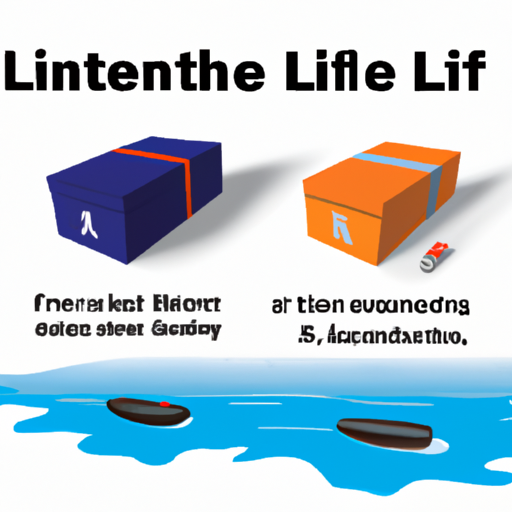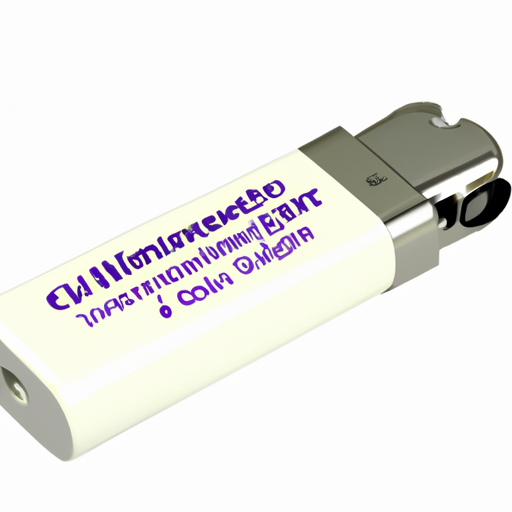Understanding Lithium-Containing Battery Products: A Comprehensive Guide
I. Introduction
In today's technology-driven world, lithium-containing battery products have become indispensable. From powering our smartphones to enabling electric vehicles (EVs), these batteries are at the heart of modern innovation. This article aims to educate readers about lithium batteries, their applications, benefits, safety considerations, and the complexities involved in shipping them by sea.
II. Overview of Lithium Batteries
A. What are Lithium Batteries?
Lithium batteries are rechargeable energy storage devices that utilize lithium ions as a primary component of their electrochemistry. They are known for their high energy density, lightweight design, and long cycle life. The two most common types of lithium batteries are lithium-ion (Li-ion) and lithium-polymer (LiPo) batteries.
1. **Composition and Chemistry**: Lithium batteries consist of an anode (typically made of graphite), a cathode (often composed of lithium metal oxides), and an electrolyte that facilitates the movement of lithium ions between the anode and cathode during charging and discharging.
2. **Types of Lithium Batteries**:
- **Lithium-Ion (Li-ion)**: These batteries are widely used in consumer electronics and electric vehicles due to their high energy density and efficiency.
- **Lithium-Polymer (LiPo)**: These batteries are more flexible in shape and size, making them ideal for applications where space is limited, such as drones and smartphones.
B. Common Applications of Lithium Batteries
Lithium batteries are utilized in various sectors, including:
1. **Consumer Electronics**: Devices like smartphones, laptops, and tablets rely on lithium batteries for their portability and long-lasting power.
2. **Electric Vehicles (EVs)**: The automotive industry has embraced lithium batteries for their ability to provide the necessary energy for electric propulsion.
3. **Renewable Energy Storage**: Lithium batteries play a crucial role in storing energy generated from renewable sources, such as solar and wind power, ensuring a stable energy supply.
4. **Medical Devices**: Many medical devices, including pacemakers and portable diagnostic equipment, depend on lithium batteries for reliable performance.
III. Benefits of Lithium Batteries
Lithium batteries offer several advantages that make them a preferred choice for various applications:
A. High Energy Density
Lithium batteries have a higher energy density compared to other battery types, meaning they can store more energy in a smaller volume. This characteristic is particularly beneficial for portable devices and electric vehicles, where space and weight are critical factors.
B. Lightweight and Compact Design
The lightweight nature of lithium batteries allows for more efficient designs in consumer electronics and vehicles. This compactness contributes to the overall performance and usability of these products.
C. Long Cycle Life and Low Self-Discharge Rates
Lithium batteries can endure numerous charge and discharge cycles without significant degradation, making them a cost-effective choice over time. Additionally, they exhibit low self-discharge rates, meaning they retain their charge for extended periods when not in use.
D. Environmental Considerations and Recycling Potential
Lithium batteries can be recycled, reducing their environmental impact. Many manufacturers are now implementing recycling programs to recover valuable materials and minimize waste.
IV. Safety Considerations
While lithium batteries offer numerous benefits, they also come with safety risks that must be addressed.
A. Risks Associated with Lithium Batteries
1. **Fire Hazards and Thermal Runaway**: Lithium batteries can pose fire risks if damaged or improperly handled. Thermal runaway, a condition where a battery overheats and leads to combustion, is a significant concern.
2. **Environmental Impact of Improper Disposal**: Disposing of lithium batteries in landfills can lead to environmental contamination. It is crucial to follow proper disposal and recycling protocols.
B. Safety Standards and Regulations
1. **UN Regulations for the Transport of Lithium Batteries**: The United Nations has established regulations for the safe transport of lithium batteries, which include specific packaging and labeling requirements.
2. **Manufacturer Guidelines for Safe Usage and Disposal**: Manufacturers provide guidelines for the safe use, storage, and disposal of lithium batteries to mitigate risks.
V. Shipping Lithium Batteries by Sea
Shipping lithium batteries by sea involves navigating a complex regulatory landscape to ensure safety and compliance.
A. Regulatory Framework for Shipping Lithium Batteries
1. **International Maritime Organization (IMO) Guidelines**: The IMO has developed guidelines for the safe transport of dangerous goods, including lithium batteries, to prevent accidents during shipping.
2. **Dangerous Goods Regulations (DGR)**: These regulations outline the classification, packaging, and labeling requirements for shipping lithium batteries.
B. Packaging Requirements
1. **Types of Packaging Materials**: Lithium batteries must be packaged in materials that can withstand potential impacts and prevent short circuits. This often includes using non-conductive materials and protective casings.
2. **Labeling and Documentation**: Proper labeling is essential for identifying the contents and ensuring safe handling. Documentation, including declarations of dangerous goods, must accompany shipments.
C. Shipping Methods and Logistics
1. **Choosing the Right Shipping Partner**: It is crucial to select a shipping partner experienced in handling lithium batteries to ensure compliance with regulations and safety standards.
2. **Cost Considerations and Transit Times**: Shipping lithium batteries can be more expensive than other goods due to the additional safety measures required. Transit times may also vary based on the shipping method and destination.
D. Customs and Import/Export Regulations
1. **Country-Specific Regulations**: Different countries have varying regulations regarding the import and export of lithium batteries. It is essential to research and comply with these regulations to avoid delays or penalties.
2. **Documentation Needed for International Shipping**: Accurate documentation, including commercial invoices and packing lists, is necessary for smooth customs clearance.
VI. Challenges in Shipping Lithium Batteries
Shipping lithium batteries presents several challenges that require careful management.
A. Compliance with Evolving Regulations
As regulations surrounding lithium batteries continue to evolve, staying informed and compliant can be challenging for businesses involved in shipping.
B. Handling and Storage During Transit
Proper handling and storage of lithium batteries during transit are critical to preventing accidents. This includes ensuring that batteries are stored in a temperature-controlled environment and secured to prevent movement.
C. Risk Management and Insurance Considerations
Shipping lithium batteries carries inherent risks, making it essential to have appropriate insurance coverage to protect against potential losses or damages.
VII. Future Trends in Lithium Battery Technology
The future of lithium battery technology is promising, with several trends on the horizon.
A. Innovations in Battery Chemistry and Design
Research is ongoing to develop new battery chemistries that enhance performance, reduce costs, and improve safety. Innovations such as solid-state batteries and lithium-sulfur batteries are gaining attention.
B. The Role of Lithium Batteries in Sustainable Energy Solutions
As the world shifts towards renewable energy, lithium batteries will play a crucial role in energy storage solutions, enabling a more sustainable future.
C. Potential Impacts on Shipping and Logistics
Advancements in battery technology may influence shipping logistics, including packaging requirements and transportation methods, as new battery types emerge.
VIII. Conclusion
Understanding lithium-containing battery products is essential in today's technology-driven landscape. As these batteries continue to power our devices and vehicles, it is crucial to prioritize safe handling and shipping practices. By staying informed about regulations and best practices, individuals and businesses can contribute to a safer and more sustainable future.
IX. References
For further reading on lithium batteries and shipping regulations, consider exploring the following resources:
- International Maritime Organization (IMO)
- United Nations Economic Commission for Europe (UNECE)
- Battery University
- Relevant industry publications and guidelines
By fostering education and awareness in the industry, we can ensure the safe and responsible use of lithium-containing battery products.













